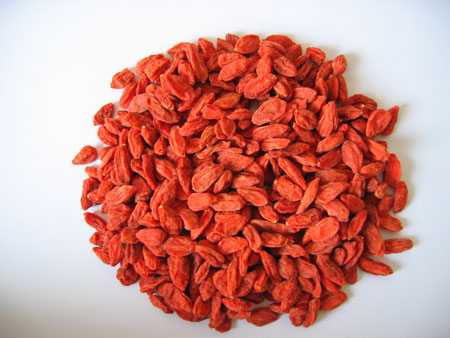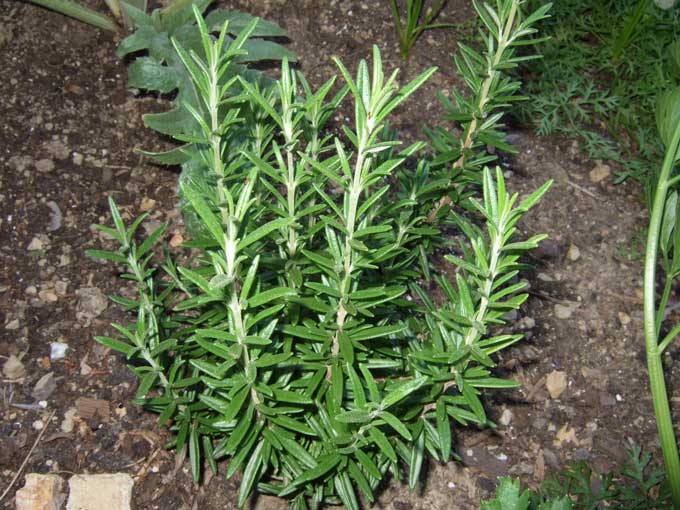
Pomegranates is a fruit-bearing small tree, genus Punica, belonging to family Lythraceae, native to Iran but has been cultivated in Asian since ancient time.
Nutritional Supplements
1. Dietary fiber
Daily intake of right amount of fibers can prvent and treat
a. Diabetes, as Increased consumption of vegetables, whole grains, and soluble and insoluble fiber is associated with improved glucose metabolism in both diabetic and nondiabetic individuals. Improvements in insulin sensitivity and glucose homeostasis were more evident in participants following a plant-based diet compared with other commonly used diets, according to the study of "Efficacy of high-fiber diets in the management of type 2 diabetes mellitus" by Wolfram T, Ismail-Beigi F.(1)
b. Cholesterol and cardivascular diseases, as the soluble fiber content of legumes and vegetables has also been shown to decrease LDL-C. Current investigations continue to explore this area in depth and examine potential synergies between dietary fiber and other phytochemicals that may lower cholesterol, according to the study of "Effects of soluble dietary fiber on low-density lipoprotein cholesterol and coronary heart disease risk" by Bazzano LA.(2)
2. Protein
3. Thiamine (vitamin B1)
4. Riboflavin (vitamin B2)
5. Niacin (vitamin B3)
6. Pantothenic acid (vitamin B5)
7. Vitamin B6
8. Folate (vitamin B9)
9. Vitamin C
10. Calcium
11. Iron
12. Magnesium
13. Phosphorus
14. Potassium
15. Zinc
16. Etc.
Health Benefits
A. Health benefits according to researches
1. Anti - Cancers
In the investigation of phytochemicals and pomegranate extracts of the fruit of the Punica granatum (pomegranate) and theirs antioxidant effects found that due to the action of ellagic acid, the main polyphenol in pomegranate. In this mini review the effects of pomegranate extracts and ellagic acid on the proliferation of prostate cancer cells and their future potential are discussed, according to "Ellagic acid, pomegranate and prostate cancer -- a mini review" by Bell C, Hawthorne S.(a)
2. Antiproliferative, apoptotic and antioxidant activities
In the assessment of polyphenols including punicalagin, the major fruit ellagitannin, and ellagic acid (EA) of Pomegranate (Punica granatum L.) fruits juice (PJ) and its antioxidant and anti-atherosclerotic activities found that Pomegranate juice showed greatest antiproliferative activity against all cell lines by inhibiting proliferation from 30% to 100%. At 100 microg/ml, PJ, EA, punicalagin and TPT induced apoptosis in HT-29 colon cells. However, in the HCT116 colon cells, EA, punicalagin and TPT but not PJ induced apoptosis. The trend in antioxidant activity was PJ>TPT>punicalagin>EA. The superior bioactivity of PJ compared to its purified polyphenols illustrated the multifactorial effects and chemical synergy of the action of multiple compounds compared to single purified active ingredients, according to "In vitro antiproliferative, apoptotic and antioxidant activities of punicalagin, ellagic acid and a total pomegranate tannin extract are enhanced in combination with other polyphenols as found in pomegranate juice" by Seeram NP, Adams LS, Henning SM, Niu Y, Zhang Y, Nair MG, Heber D.(b)
3. Osteoarthritis
In the evaluation of extract of omegranate and its effect on p38-MAPK which is a major signal-transducing pathway in osteoarthritis (OA) concluded that our results provide an important insight into the molecular basis of the reported cartilage protective and arthritis inhibitory effects of pomegranate extract. These novel pharmacological actions of PE on IL-1β stimulated human OA chondrocytes impart a new suggestion that PE or PE-derived compounds may be developed as MKK and p38-MAPK inhibitors for the treatment of OA and other degenerative/inflammatory diseases, according to "Pomegranate extract inhibits the interleukin-1β-induced activation of MKK-3, p38α-MAPK and transcription factor RUNX-2 in human osteoarthritis chondrocytes" by Rasheed Z, Akhtar N, Haqqi TM.(c)
4. Rheumatoid arthritis
In the analyzing the Pomegranate extract (POMx) and its effect on the incidence and severity of collagen-induced arthritis in mice, found that pomegranate consumption reduced DAS28 in RA patients, and this effect could be related to the antioxidative property of pomegranates. Dietary supplementation with pomegranates may be a useful complementary strategy to attenuate clinical symptoms in RA patients, according to "Consumption of pomegranate decreases serum oxidative stress and reduces disease activity in patients with active rheumatoid arthritis: a pilot study" by Balbir-Gurman A, Fuhrman B, Braun-Moscovici Y, Markovits D, Aviram M.(d)
5. Obesity
In the research of evaluate the effect of pomegranate juice on insulin secretion and sensitivity in patients with obesity found that Pomegranate juice administration for 1 month did not modify insulin secretion and sensitivity in patients with obesity; however, the natural evolution to increased weight and adiposity was halted, according to "Effect of pomegranate juice on insulin secretion and sensitivity in patients with obesity" by González-Ortiz M, Martínez-Abundis E, Espinel-Bermúdez MC, Pérez-Rubio KG.(e)
6. Etc.
B. Health benefits according to concentration
1. Dietary fiber
Daily intake of right amount of fibers can prvent and treat
a. Diabetes, as Increased consumption of vegetables, whole grains, and soluble and insoluble fiber is associated with improved glucose metabolism in both diabetic and nondiabetic individuals. Improvements in insulin sensitivity and glucose homeostasis were more evident in participants following a plant-based diet compared with other commonly used diets, according to the study of "Efficacy of high-fiber diets in the management of type 2 diabetes mellitus" by Wolfram T, Ismail-Beigi F.(1)
b. Cholesterol and cardivascular diseases, as the soluble fiber content of legumes and vegetables has also been shown to decrease LDL-C. Current investigations continue to explore this area in depth and examine potential synergies between dietary fiber and other phytochemicals that may lower cholesterol, according to the study of "Effects of soluble dietary fiber on low-density lipoprotein cholesterol and coronary heart disease risk" by Bazzano LA.(2)
2. Vitamin C
In the evaluation of pulmonary dysfunction. and it effects on pulmonary dysfunction found that At present, evidence from randomised-controlled trials is insufficient to recommend a specific role for vitamin C in the treatment of asthma. Further methodologically strong and large-scale randomised controlled trials are needed in order to address the question of the effectiveness of vitamin C in children with asthma but some outcome data showed effectiveness on lung function, symptom scores, IgE levels and inhaled steroid use. One small study showed a significant difference in % drop in FEV1 post-exercise, according to the study of "Vitamin C supplementation for asthma" by Kaur B, Rowe BH, Arnold E.(3)
3. Folate
Folate beside is important for the production of red blood cells, and for the proper development of the brain, it also helps to enhance the replication and maintain DNA and RNA, thus reducing the risk of birth defects, in a study of "Go folic!" by Bland J., posted in PubMed, researchers state that in order to prevent neural tube defects (NTDs), and proactively prevent new cases of spina bifida and hydrocephalus, it is essential that women take folic acid well before becoming pregnant. Through the use of social networks, and the voice of healthcare professionals, it is hoped that more women than ever before will receive the Go Folic! message and start taking the 400mcg/day required to ensure the development of a healthy brain and spine.
4. Vitamin B5
Vitamin B5 not only plays an important role in speeding wound healing , according to ""Role of pantothenic and ascorbic acid in wound healing processes: in vitro study on fibroblasts" by Lacroix B, Didier E, Grenier JF.,(4), but also enhances the healing of diabetic ulceration, according to "Safety and efficacy of a new honey ointment on diabetic foot ulcers: a prospective pilot study" by Abdelatif M, Yakoot M, Etmaan M.(5)
5. Vitamin B1
Vitamin B1 beside is important supplement used to treat inflammatory diseases, according to ""Protective role of benfotiamine, a fat-soluble vitamin B1 analogue, in lipopolysaccharide-induced cytotoxic signals in murine macrophages" by Yadav UC, Kalariya NM, Srivastava SK, Ramana KV.,(6), but also p;revent the risk of diabetic complication, according to "The potential role of thiamine (vitamin B1) in diabetic complications" by Thornalley PJ.(7)
6. Phosphorus
Phosphorus forms an important part of the process related to growth and maintenance of bones and teeth, according to the study of "Alterations in phosphorus, calcium and PTHrP contribute to defects in dental and dental alveolar bone formation in calcium-sensing receptor-deficient mice" by Sun W, Sun W, Liu J, Zhou X, Xiao Y, Karaplis A, Pollak MR, Brown E, Goltzman D, Miao D.(8)
7. Etc.
C. Other Health benefits
1. Coronary heart disease
In the study of pomegranate juice consumption and its effects on coronary heart disease found that in subjects at moderate coronary heart disease risk, pomegranate juice consumption had no significant effect on overall CIMT progression rate but may have slowed CIMT progression in subjects with increased oxidative stress and disturbances in the TG-rich lipoprotein/HDL axis, according to "Effects of consumption of pomegranate juice on carotid intima-media thickness in men and women at moderate risk for coronary heart disease" by Davidson MH, Maki KC, Dicklin MR, Feinstein SB, Witchger M, Bell M, McGuire DK, Provost JC, Liker H, Aviram M.(I)
2. Cardiovascular health
In the classification of pomegranate juice consumption and its antioxidant effect on cardiovascular health found that some antioxidants have been shown to reduce blood pressure, the purpose of this review was to discover the effect of pomegranate juice consumption on blood pressure and cardiovascular health. Pomegranate juice consumption may reduce systolic blood pressure, inhibits serum ACE activity, and is convincingly a heart-healthy fruit [Aviram M, Dornfeld L. Pomegranate juice consumption inhibits serum angiotensin converting enzyme activity and reduces systolic blood pressure, according to "The effects of pomegranate juice consumption on blood pressure and cardiovascular health" by Stowe CB.(II)
3. Diabetes
In the research of pomegranate consumption and its effect on diabetes found that despite a similar level of energy intake, HF mice had a greater concentration of leptin and a lower concentration of adiponectin compared to HF + POMo mice. POMo intake was associated with an improvement in insulin sensitivity, suggesting that risk of developing type 2 diabetes may have been reduced; however, CVD risk did not change., according to "Pomegranate seed oil consumption during a period of high-fat feeding reduces weight gain and reduces type 2 diabetes risk in CD-1 mice" by McFarlin BK, Strohacker KA, Kueht ML.(III)
4. Catechins
Catechin, a polyphenol found abundantly in Pomegranates has exerted its antioxidant effect in reducing the risk of forming of free radicals, according to "Catechins and procyanidins in berries of vaccinium species and their antioxidant activity" by Määttä-Riihinen KR, Kähkönen MP, Törrönen AR, Heinonen IM.(IV)
5. Kidney Protective effect
In the investigation of the effect of pomegranate seed oil (PSO) on HCBD-induced nephrotoxicity
found that PSO clearly attenuated HCBD-induced nephrotoxicity, but explanation and mechanism of this protection need further explorations, according to "Protective effect of pomegranate seed oil on hexachlorobutadiene-induced nephrotoxicity in rat kidneys" by Bouroshaki MT, Sadeghnia HR, Banihasan M, Yavari S.(V)
6. Etc.
Side effects
1. Allergic effect
2. Pomegranates may intyeract with certain types of medication, please make sure you talk to your doctor if you are taking certain medication.
3. Overdose may increase the risk of toxicity
4. Etc.
Super foods Library, Eat Yourself Healthy With The Best of the Best Nature Has to Offer
For the world Super Foods, visit http://theworldbestsuperfoods.blogspot.com/2011/12/world-best-super-foods.html
For other health articles, please visit http://medicaladvisorjournals.blogspot.com/
Sources
(a) http://www.ncbi.nlm.nih.gov/pubmed/18237460
(b) http://www.ncbi.nlm.nih.gov/pubmed/15936648
(c) http://www.ncbi.nlm.nih.gov/pubmed/20955562
(d) http://www.ncbi.nlm.nih.gov/pubmed/21910371
(e) http://www.ncbi.nlm.nih.gov/pubmed/21811060
(1) http://www.ncbi.nlm.nih.gov/pubmed/20713332
(2) http://www.ncbi.nlm.nih.gov/pubmed/18937894
(3) http://www.ncbi.nlm.nih.gov/pubmed/19160185
(4) http://www.ncbi.nlm.nih.gov/pubmed/3243694
(5) http://www.ncbi.nlm.nih.gov/pubmed/18376651
(6) http://www.ncbi.nlm.nih.gov/pubmed/20219672
(7) http://www.ncbi.nlm.nih.gov/pubmed/18220605
(8) http://www.ncbi.nlm.nih.gov/pubmed/20150282
(I) http://www.ncbi.nlm.nih.gov/pubmed/19766760
(II) http://www.ncbi.nlm.nih.gov/pubmed/21457902
(III) http://www.ncbi.nlm.nih.gov/pubmed/19079947
(IV) http://www.ncbi.nlm.nih.gov/pubmed/16248542
(V) http://www.ncbi.nlm.nih.gov/pubmed/20486845


